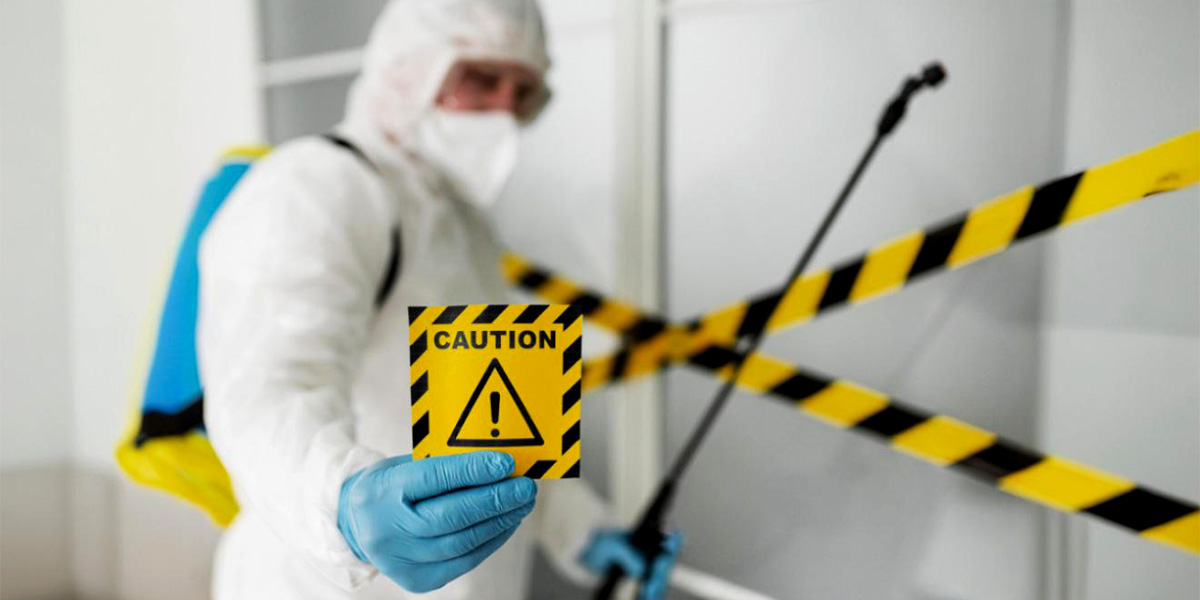In work on hazardous materials such as asbestos, there should be no compromise on safety. Asbestlint is one of the most significant devices applied to ensure safety near areas contaminated with asbestos. This product is not widely known to the regular population, but it is necessary to professionals dealing in the removal of asbestos, construction, and environmental security.
What Is Asbestlint?
Asbestlint is a warning tape of special nature to label contaminated or potentially contaminated areas with asbestos fibers. It is quite applicable in asbestos demolition areas where orderly safety areas can be marked out clearly. Normally, the term ASBEST is written on the tape in bold letters, usually red or black, printed on white or yellow tape.
Asbestos is a toxic substance which used to be widely used in buildings, insulation, and fireproofing. When asbestos is damaged or disturbed then small fibers may be released into the air. Inhaling these fibers is dangerous to health as it has resulted in severe conditions such as lung cancer and mesothelioma. Is there any reason why it is important to mark areas that are littered with asbestos.
Why Is Asbestlint Important?
Asbestlint plays a key role in protecting workers, visitors, and the general public from accidental exposure. Its purpose is to clearly identify danger zones and make sure no one enters without proper safety equipment.
Here’s why asbestlint is important:
- Prevents unauthorized access
It alerts people that they are near a hazardous area and should not enter without permission and protection. - Improves worker safety
It helps workers quickly recognize the boundaries of the contaminated space and reduces the risk of accidental exposure. - Supports legal and safety compliance
In many countries, using asbestlint is required by law during asbestos removal projects. - Provides a visual warning
Asbestlint makes the risk visible even from a distance, helping everyone stay alert.
Where Is Asbestlint Used?
Asbestlint is typically used in areas where asbestos is present, being removed, or suspected to exist. These places include:
- Old residential buildings during renovation
- Factories or warehouses with asbestos roofing
- Demolition sites with asbestos-containing materials
- Schools, hospitals, or government buildings undergoing asbestos abatement
- Construction zones involving pipe insulation, tiles, or wall panels that contain asbestos
It is stretched around containment zones, doorways, staircases, or any entry point that leads to the hazardous area.
How to Use Asbestlint Properly
It is important to use asbestlint because of safety and legality. A simple guideline is provided below:
Step 1: Identify the Hazard Zone
Before installing the tape, determine the location of the risk of asbestos. This is to be done by way of either professional inspection or testing.
Step 2: Prepare the Area
Clear the area of all equipment that is unnecessary and persons. Use Personal Protective Equipment (PPE) that includes gloves, masks and coveralls.
Step 3: Place the Asbestlint
Roll the tape on the danger area. Secure it in place with poles, cones, or tie-down points.
Step 4: Add Warning Signs
Coupled with the tape, there should also be asbestos warning signs placed in conspicuous parts. This doubles up the message and fulfills most legal requirements.
Step 5: Monitor the Site
Continue to check the tape. It may be moved or destroyed by wind, construction work, or even people. Ensure that it is left there until the place is tested and cleaned thoroughly.
Safety Standards and Legal Guidelines in 2025
Laws regarding asbestos handling and warning signage vary by country, but most developed regions require strict safety measures. Here’s what you should know in 2025:
1. International Standards (OSHA/EU)
- Use of labeled asbestos tape is mandatory for all active asbestos removal zones.
- Workers must be trained in asbestos handling and containment procedures.
- Protective clothing and warning signs must be used alongside asbestlint.
2. Local Guidelines (Pakistan/Asia)
- While some countries do not have clear rules, safe practices are strongly recommended.
- Contractors should follow international safety norms to protect workers and avoid liability.
- Some regions are updating their labor safety laws to include mandatory warning systems like asbestlint.
Who Should Use Asbestlint?
Asbestlint should be used by:
- Certified asbestos removal companies
- Construction site managers
- Safety officers
- Government agencies
- Maintenance teams working in old buildings
It should not be used by untrained individuals. Asbestos exposure is dangerous, and even placing tape requires basic awareness of the risks.
Common Mistakes to Avoid
Here are a few things that often go wrong when using asbestlint:
- Using it without warning signs
The tape alone may not be enough. Always include visual signs. - Not replacing damaged tape
If the tape falls down or gets torn, it loses its purpose. Check regularly. - Placing it too close or too far
Boundaries should include a safe buffer zone around the contaminated area. - Using ordinary tape instead of asbestlint
Only tape marked clearly with “ASBEST” is acceptable in most safety regulations.
Where to Buy Asbestlint?
Asbestlint can be found at:
- Safety equipment suppliers
- Industrial hardware stores
- Online platforms (such as Amazon or local e-commerce sites)
- Specialist asbestos safety vendors
When buying, check if the tape:
- Is weatherproof
- Has bold, clear text
- Meets industry standards
Conclusion
Asbestlint may look like simple tape, but it plays a critical role in asbestos safety. It helps protect lives, meet legal requirements, and prevent accidents. In 2025, with growing attention to workplace safety and environmental health, the correct use of asbestlint is more important than ever.
If you’re involved in any project that might expose asbestos, always make sure to follow proper procedures and never underestimate the power of a clear warning line.

